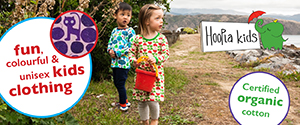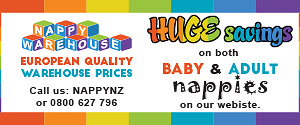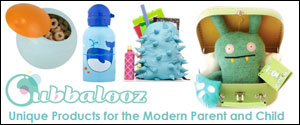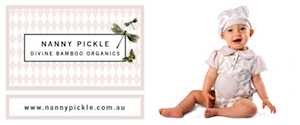growing and learning
The first and most important learning in a child’s life happens within the family. Children learn from the way people treat them and from what they see, hear and experience as soon as they are born. Children are natural learners. Between birth and five years, and especially to three years, children grow and learn at the fastest rate of their lifetime. It is easy to see the enormous opportunity that parents, and those who care for children have in these early years to help shape children’s learning, long before they start school.
Children will thrive in an environment which is interesting and where they feel loved and safe.
You help build your children’s self-esteem when you:
• show them that they are lovable and loved
• support them in trying new things
• show them that you enjoy being with them and want to spend time with them
• help them learn new skills and praise them when they try these out.
You can help your children:
• learn about feelings by giving feelings names, eg saying “That makes you sad/cross/happy when ...”
• learn about feelings by explaining to them how others feel, eg “It hurts my ears when you shout”
• learn about getting on with others when they see you caring about others and about their own
feelings
• by talking to them and telling them what you are doing and why
• by letting them begin to help at home and be part of caring for the home, eg helping with collecting
the mail, feeding animals
• by not trying to make them share before they are able to manage this (about three to four years of
age). To a younger child it just seems like taking his things.
Your children will learn from you to value all the different things they can learn from others. Your attitude to different cultures will make a big difference to the way your children treat people from a different culture.
• You can help their cultural understanding by telling stories about your own family history and background and showing them you are proud of it.
• Talk about the differences and what we can learn from them.
• Give them opportunities to share the different experiences in homes of other children.
• Give your children opportunities to see and take part in cultural events - festivals, puppet shows, different foods and music.
• Give young children lots of opportunities for physical play - with some time outdoors every day if possible. Physical play helps them develop strength, balance and skills.
• Encourage them to use their hands - cutting, threading, pasting and drawing. This may mean letting them get ‘mucky’ while they enjoy the ‘feel’ of different things.
• Make sure they get plenty of rest and healthy food.
• Have them immunised against diseases that could harm them.
• Teach them about safety around water and roads, but remember they are not yet old enough to protect themselves. They need supervision.
• Make sure your home (and any other home you take them to) is safe for young children.
• Have fun with words - say or sing rhymes, songs and jingles.
• Tell babies what you are doing and ask toddlers and preschoolers for their ideas.
• Read and tell stories from when they are very young. Even babies benefit from listening to your
voice.
One of the most important things you can do for your child is to talk with her and listen to her as she talks to you.
curious and full of ideas. Once they can move about, they like to explore and do things in different ways.
By accepting their ideas and the things they try, you are encouraging them to explore, take risks and ‘have a go’.
• Take them to entertainment for children - movies, face painting, children’s concerts.
• Encourage them to sing and dance, to imagine and be creative.
• Provide boxes and dress-up clothes for pretend play.
• Provide paper, paints and playdough.
• Collect bits and pieces such as leaves, feathers, paper, fabric for making things and then display what they make.
You can help children to think by:
• talking about things as you do them, eg “It’s a long way so we’ll go on the bus” or “I’m taking my
jumper off because it is hot”
• giving them things to sort and match, eg coloured pegs or socks
• doing puzzles
• providing building toys so they can build things
• telling jokes and riddles
• asking them what they think about an issue.
they are learning about the built-up world around them - roads, houses, shops and schools. They will learn from you if you tell them why you do things - when you recycle, mow, weed or paint the house.
• Let your children explore outdoors. This learning is messy play with sand, dirt and water. Making a mess can be an important part of learning as children discover and explore.
• Talk to them about trees, weather, sky, moon, birds, fish and animals.
• Look for tiny insects that live in the garden - but don’t encourage touching!
• Plant seeds and watch them grow.
• Watch a house being built (and explain why you need to watch from a safe distance).
• Explore new places together like trying a new park or walking around a different block in your suburb.
You can help children think about technology when you:
• talk about the tools you are using and how they help you
• talk about different ways of doing things
• make sure both boys and girls get the same chances to use things like hammers, brooms and computers
• talk about what you could do without technology, eg how to get to the shop without a car
• encourage thinking about how to use things to solve problems, eg how to carry things from one place to another.
Your young baby is an active learner. From birth up to the age of six months, a baby shows this learning by turning his head towards sounds and movements, having different things to look at, having rattles to hit, reaching up to hold his feet while lying on his back, smiling at familiar faces and voices, making different sounds, and putting everything in his mouth.
Young babies enjoy being with people - faces to watch, fingers to grip, skin and hair to feel, voices to listen to, arms to be rocked in.
Older babies will play happily with household items such as pegs, cotton reels, paper plates, used wrapping paper, spoons and plastic containers (but not plastic bags). They love things to crawl in and over.
Toddlers need room to explore and run. They need big things to hold and play with - big balls, blocks. They like simple ride-on toys and toys they can push and pull.
Two year olds enjoy dress-ups, ride-on toys, stories, rhymes, and copying their parents. They are not yet able to share so putting special toys away before visitors arrive or having more than one toy of the same kind can be helpful if they are playing near other children.
Young preschoolers enjoy songs, stories and rhymes, drawing, painting, playdough, making things, swings and playgrounds and lots of time and space to run.
Children of this age love stories and funny words, building with large Lego, make-believe play, painting and playing with others. They enjoy trying to do new things at playgrounds and problem solving skills with simple computer games.
• Children learn best in an environment which is interesting and where they feel loved and safe.
• Provide an environment where your children can explore, learn and try new things and talk about what they are doing. Teach them to watch, listen, think and question and let them practise what they can do.
• Be positive and encourage them to try new things in safe ways.
• Don’t feel guilty about asking for information or support for your child or for yourself. Every child is different and every stage of development brings new challenges, so there may be times when you need advice or support. Sometimes that support will be available within your family, sometimes it will have to come from others.
• Give your children lots of time to play. Play is important because it allows children to solve problems and practise skills over and over again in their own time and to develop ideas at their own pace. While many toys bring great fun and challenges, play also can be provided without spending much money.
• ‘Junk’ items can help imaginative play. Big cardboard boxes make great cubbies or trains, food packages and advertising brochures are good for home or shop play, old clothes for dressing up, old pots and pans and spoons for digging in the sand.
• Parks have swings, slides and spaces for running and ball play.
• Beaches have sand for digging, waves for chasing, stones, seaweed or shells for collecting.
• Libraries have books, music, games and puzzles for thinking, sharing, learning about rules and having fun.
• Try to find things to do which will help your child’s learning in the areas of physical and social development, thinking and communicating.
• Children thrive in an environment which is interesting and where they feel loved and safe.
• All children are learners who will develop at their own rate.
• Children learn best when they have interesting things to do and interested people to help them.
• There are many ways of learning by watching, listening and doing.
• Playing is an important way children learn.
• Encourage your children from babyhood to try new things and explore new skills.
• Be guided by your own child’s interests and pace.
Article provided courtesy of Parenting SA
How do children learn?
There are many ways of learning. Children learn by watching, by listening and especially by doing. All children go through a number of stages but there are differences between children within each stage. There are also differences in the length of time it takes for children to move from stage to stage.Children will thrive in an environment which is interesting and where they feel loved and safe.
What are some important areas of learning?
Self-esteem
Self-esteem is about who you are as a person and how you feel about yourself and is a very important part of learning. Feeling loved, valued, wanted and respected, leads to feeling good about yourself and being confident. Once children have this confidence, they can try new things, explore their world, cope when things go wrong and feel that they have a chance to succeed.You help build your children’s self-esteem when you:
• show them that they are lovable and loved
• support them in trying new things
• show them that you enjoy being with them and want to spend time with them
• help them learn new skills and praise them when they try these out.
Social development
Young children are beginning to learn about feelings and how to get on with other people long before they are able to do this very well.You can help your children:
• learn about feelings by giving feelings names, eg saying “That makes you sad/cross/happy when ...”
• learn about feelings by explaining to them how others feel, eg “It hurts my ears when you shout”
• learn about getting on with others when they see you caring about others and about their own
feelings
• by talking to them and telling them what you are doing and why
• by letting them begin to help at home and be part of caring for the home, eg helping with collecting
the mail, feeding animals
• by not trying to make them share before they are able to manage this (about three to four years of
age). To a younger child it just seems like taking his things.
Cultural understanding
Children need to learn that being different is okay - we are all different in one way or another.Your children will learn from you to value all the different things they can learn from others. Your attitude to different cultures will make a big difference to the way your children treat people from a different culture.
• You can help their cultural understanding by telling stories about your own family history and background and showing them you are proud of it.
• Talk about the differences and what we can learn from them.
• Give them opportunities to share the different experiences in homes of other children.
• Give your children opportunities to see and take part in cultural events - festivals, puppet shows, different foods and music.
Health and physical development
The foundations for good health are laid down in the earliest years. Babies, toddlers and preschoolers are naturally active and they learn through their bodies long before they can talk.• Give young children lots of opportunities for physical play - with some time outdoors every day if possible. Physical play helps them develop strength, balance and skills.
• Encourage them to use their hands - cutting, threading, pasting and drawing. This may mean letting them get ‘mucky’ while they enjoy the ‘feel’ of different things.
• Make sure they get plenty of rest and healthy food.
• Have them immunised against diseases that could harm them.
• Teach them about safety around water and roads, but remember they are not yet old enough to protect themselves. They need supervision.
• Make sure your home (and any other home you take them to) is safe for young children.
Communication
Communication is one of the most important parts of our daily life. It means understanding what we see, hear and read, and being able to give messages to others in ways they can understand. Children need words for thinking and learning.• Have fun with words - say or sing rhymes, songs and jingles.
• Tell babies what you are doing and ask toddlers and preschoolers for their ideas.
• Read and tell stories from when they are very young. Even babies benefit from listening to your
voice.
One of the most important things you can do for your child is to talk with her and listen to her as she talks to you.
Creativity
Creativity is a child’s own special way of expressing ideas, thoughts and feelings. Young children arecurious and full of ideas. Once they can move about, they like to explore and do things in different ways.
By accepting their ideas and the things they try, you are encouraging them to explore, take risks and ‘have a go’.
• Take them to entertainment for children - movies, face painting, children’s concerts.
• Encourage them to sing and dance, to imagine and be creative.
• Provide boxes and dress-up clothes for pretend play.
• Provide paper, paints and playdough.
• Collect bits and pieces such as leaves, feathers, paper, fabric for making things and then display what they make.
Thinking
Thinking involves looking and listening, questioning, trying things out and making decisions. Children need time to be able to try things over and over until they can work things out. Sometimes if they are getting frustrated they will need a little help from an adult.You can help children to think by:
• talking about things as you do them, eg “It’s a long way so we’ll go on the bus” or “I’m taking my
jumper off because it is hot”
• giving them things to sort and match, eg coloured pegs or socks
• doing puzzles
• providing building toys so they can build things
• telling jokes and riddles
• asking them what they think about an issue.
Learning about the environment
Children enjoy playing in and exploring the natural world - backyard, park and beach. At the same timethey are learning about the built-up world around them - roads, houses, shops and schools. They will learn from you if you tell them why you do things - when you recycle, mow, weed or paint the house.
• Let your children explore outdoors. This learning is messy play with sand, dirt and water. Making a mess can be an important part of learning as children discover and explore.
• Talk to them about trees, weather, sky, moon, birds, fish and animals.
• Look for tiny insects that live in the garden - but don’t encourage touching!
• Plant seeds and watch them grow.
• Watch a house being built (and explain why you need to watch from a safe distance).
• Explore new places together like trying a new park or walking around a different block in your suburb.
Technology
Technology is all around us and helps to make life easier. Things like scissors, kettles, bike pumps, washing machines, cars and computers are part of technology. Technology is about using things to solve problems, eg sweeping the floor or cutting material.You can help children think about technology when you:
• talk about the tools you are using and how they help you
• talk about different ways of doing things
• make sure both boys and girls get the same chances to use things like hammers, brooms and computers
• talk about what you could do without technology, eg how to get to the shop without a car
• encourage thinking about how to use things to solve problems, eg how to carry things from one place to another.
Things you can do with children at different ages
baby (up to 6 months)
Your young baby is an active learner. From birth up to the age of six months, a baby shows this learning by turning his head towards sounds and movements, having different things to look at, having rattles to hit, reaching up to hold his feet while lying on his back, smiling at familiar faces and voices, making different sounds, and putting everything in his mouth.Young babies enjoy being with people - faces to watch, fingers to grip, skin and hair to feel, voices to listen to, arms to be rocked in.
baby (6-12 months)
Your baby is getting stronger and starting to move about. In the second six months your baby begins to explore the world around her. This can be scary at first and she may be afraid to let the people she feels safe with out of her sight.Older babies will play happily with household items such as pegs, cotton reels, paper plates, used wrapping paper, spoons and plastic containers (but not plastic bags). They love things to crawl in and over.
early toddler (1-2 years)
Although unsteady on his feet at first, your toddler loves being able to walk and climb. Falling over, small bumps and bruises are common. It is very important for them to do things for themselves and their first word may be “No”. Parents are important as the secure base for toddlers to return to when they need reassurance. They are starting to use words to tell you what they want.Toddlers need room to explore and run. They need big things to hold and play with - big balls, blocks. They like simple ride-on toys and toys they can push and pull.
older toddler (2-3 years)
Your two year old seems to be always curious and on the move as she explores more widely. She enjoys being with other children and learning to do more for herself. Tantrums are common because she is not yet able to do the things she wants to and she can get very frustrated. Speech becomes clearer and easier to understand.Two year olds enjoy dress-ups, ride-on toys, stories, rhymes, and copying their parents. They are not yet able to share so putting special toys away before visitors arrive or having more than one toy of the same kind can be helpful if they are playing near other children.
young preschooler (3-4 years)
Your young child begins make-believe play with other children. Learning how to get on with others is important to your child’s development and this is when he begins to share and take turns. This is the age children ask many questions.Young preschoolers enjoy songs, stories and rhymes, drawing, painting, playdough, making things, swings and playgrounds and lots of time and space to run.
preschooler (4-5 years)
Four year old preschoolers move well and enjoy physical activity. Their thinking shows in the things they say, draw, make and do. “Why?” questions are often asked. They are more able to see things from another’s point of view.Children of this age love stories and funny words, building with large Lego, make-believe play, painting and playing with others. They enjoy trying to do new things at playgrounds and problem solving skills with simple computer games.
What parents can do
As parents you are in the best position to know what your children like and what they can do.• Children learn best in an environment which is interesting and where they feel loved and safe.
• Provide an environment where your children can explore, learn and try new things and talk about what they are doing. Teach them to watch, listen, think and question and let them practise what they can do.
• Be positive and encourage them to try new things in safe ways.
• Don’t feel guilty about asking for information or support for your child or for yourself. Every child is different and every stage of development brings new challenges, so there may be times when you need advice or support. Sometimes that support will be available within your family, sometimes it will have to come from others.
• Give your children lots of time to play. Play is important because it allows children to solve problems and practise skills over and over again in their own time and to develop ideas at their own pace. While many toys bring great fun and challenges, play also can be provided without spending much money.
Play materials can come from many places
• Outdoors, there are trees to climb, sand and water, shadows, and bushes to hide in.• ‘Junk’ items can help imaginative play. Big cardboard boxes make great cubbies or trains, food packages and advertising brochures are good for home or shop play, old clothes for dressing up, old pots and pans and spoons for digging in the sand.
• Parks have swings, slides and spaces for running and ball play.
• Beaches have sand for digging, waves for chasing, stones, seaweed or shells for collecting.
• Libraries have books, music, games and puzzles for thinking, sharing, learning about rules and having fun.
• Try to find things to do which will help your child’s learning in the areas of physical and social development, thinking and communicating.
Reminders
• The first and most important learning happens in the family.• Children thrive in an environment which is interesting and where they feel loved and safe.
• All children are learners who will develop at their own rate.
• Children learn best when they have interesting things to do and interested people to help them.
• There are many ways of learning by watching, listening and doing.
• Playing is an important way children learn.
• Encourage your children from babyhood to try new things and explore new skills.
• Be guided by your own child’s interests and pace.
Article provided courtesy of Parenting SA
advertisements






| 1. On the go accessories for school and preschool - these will make your child's school day! 2. Kid's bedroom art ideas - brighten up their spaces 3. How to dress your child for a special occasion 4. Frozen party - Gorgeous but manageable ideas for your Disney Frozen fan 5. Creamy Harissa Slow Cooked Beef - This recipe is warming and creamy. |
|
|
| 1. Flying with kids - How do the words “airplane flight” and “children” make you feel?... 2. Horse Party - ultimate horse themed party. 3. Toddlers - Living with little people: patience and understanding required! 4. Lalaloopsy party - How to craft your party around a centrepiece 5. Superkids scroggin - An innovative lunchbox idea |
|
|
| 1. Scone peapods - the cutest and most delicious vegetables around 2. Witchery Kids Clothing - with their fun blog showing the clothes in action! 3. Baby Clothes - Upcycled keepsakes. 4. Horse Party - ultimate horse themed party. 5. Best indoor playsets - Unbelievable fun most of us can only dream of! |





